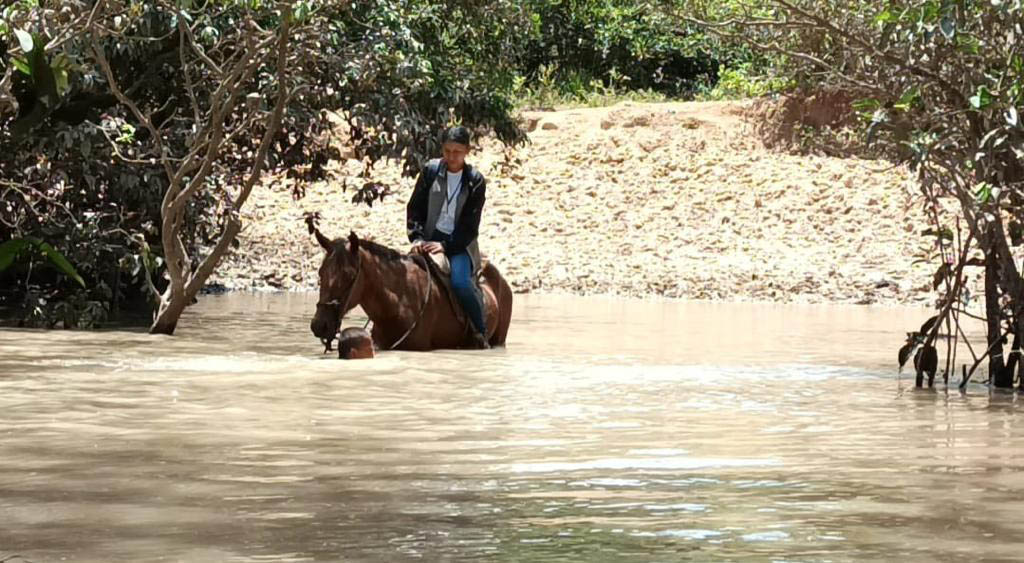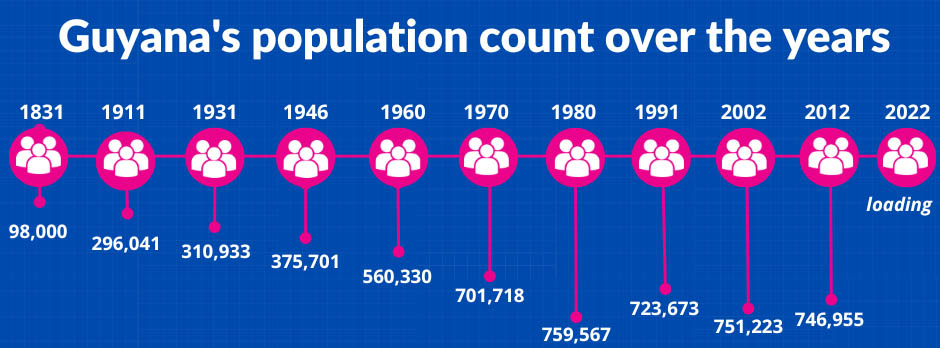Preliminary data from the concluding Census 2022 have revealed significant shifts in the population, Guyana’s Chief Statistician, Errol La Cruez said while cautioning that data collected to date is in the analysis and verification process.
“We have seen important and significant changes in the population, some expected, some not expected… but the information collected is a rich source of data that will influence development planning at all levels,” La Cruez, who heads the Guyana Bureau of Statistics related in a recent interview with Stabroek News. He could not expand on the preliminary findings of changes in the population due to the ongoing analysis.
The National Population and Housing Census 2022, where all persons in Guyana are counted, commenced in mid-September. The census takes a complete count of the population and buildings of the country with the aim of providing vital data for developmental plans for the nation, as well as providing the private sector with information that will help in new areas of investment.
Although the timeline for the completion of the field exercise was eight weeks, La Cruez noted they are in the process of wrapping up their field exercise. The extended period, he explained, is a result of challenging weather conditions and persons not being home at the time of the enumerators’ visit. All regions have been completed except regions One, Four, and Seven.
Enumerators, according to La Cruez, have worked in “sun and rain, across all terrain: rivers, paved roads, dirt roads, jungle trails, mountain passes – to provide that accurate population count and crucial associated data.”
“The reason for the delay was largely due to inclement weather conditions in regions One and Seven. The weather made it challenging to get through the terrain during the late December-January period. In Region Four, the weather played a part but it was challenging finding people at home to facilitate the interviews,” the Chief Statistician pointed out.
With most people in the cityscape and outskirts coming from professional backgrounds, he related that the enumerators could not find them at home when they visited and returning to their homes was dependent on their availability.
Persons, who have not yet been counted in the Census can contact the bureau via telephone number 227- 1155, 701-8700, or 701-8701 via WhatsApp, their website, or their Facebook page (Bureau of Statistics). Online, they can fill out a feedback form after which they will be contacted by the bureau.
Subsequent to the completion of the field exercise, the team will return to the fields for validation and quality control to test the authenticity of the information and data collected.
This is a vital process, he highlighted, while stating it allows for cross-referencing and assessment of the quality of data collected. This process has already started in regions where data collection has concluded and is scheduled for a six-week period.
Touching on the response from the populace, La Cruez said it was a great exercise and the majority cooperated with the 3,000-plus enumerators who were dispatched across the nation.
“Along the coast, at times persons were a bit hesitant to provide information but they eventually came around. It took some explaining and sensitizing before getting them to participate. In some instances, the field workers had to return at times that were convenient for the interviewee,” the Statistics Bureau head pointed out as he spoke of challenges encountered to date from the exercise.
Additionally, La Cruez pointed out this is the first census from which they will be able to collect data using Geographic Information Systems/Remote Sensing (GIS/RS). When the report is released later this year online, certain sections will be interactive allowing persons to visit direct locations from where data was collected.
At the launch of the 2022 Census, the Chief Statistician said in the information age where data and statistics are crucial inputs to making better decisions, the census is the Gold Standard since it provides the only complete and accurate measure of the entire population.
“The importance of the census cannot be emphasised enough. In the field of statistics, which utilises quantitative tools and techniques to glean important information, effectively analyse, and make inferences about proportions of the whole from a representative sample; the census sets the sample frame and enables the estimation of data with statistical confidence. It is the cornerstone and foundation of good data and statistics.”
He added, “Census data is invaluable at any time; however, it takes on even greater importance as Guyana undergoes a rapid transformation with enhanced economic and social development. Census data will inform numerous important decisions and investments that will be made in the coming decade by the government, private sector, international organisations, and others, that will significantly impact development in our communities.”
He said that through the population count, the census data paints a picture of the country and society in numbers that provide meaningful information on demographic change, education, employment levels, the size and distribution of the labour force, the size and features of the housing stock, household access to utilities, agricultural data, food security, and other important socio-economic characteristics.
Even the most basic product, the True Population Count, is used as the benchmark and common denominator for assessing and tracking development. Metrics such as per-capita income, per-capita production, per-capita anything, all rely on the population count which comes from the census, the Chief Statistician highlighted.
To this end, he noted that Guyana’s population has been relatively constant since the 1970’s.
President Irfaan Ali, stated that with data in hand, the work of policymakers is about “75 per cent complete” and plans made going forward are guaranteed to be data-driven.
The 2022 Census is a historic one for Guyana, since the enumerators collected data electronically, instead of using paper, as was done in the past. This exercise occurs every ten years, in accordance with the Statistics Act of 1965.











